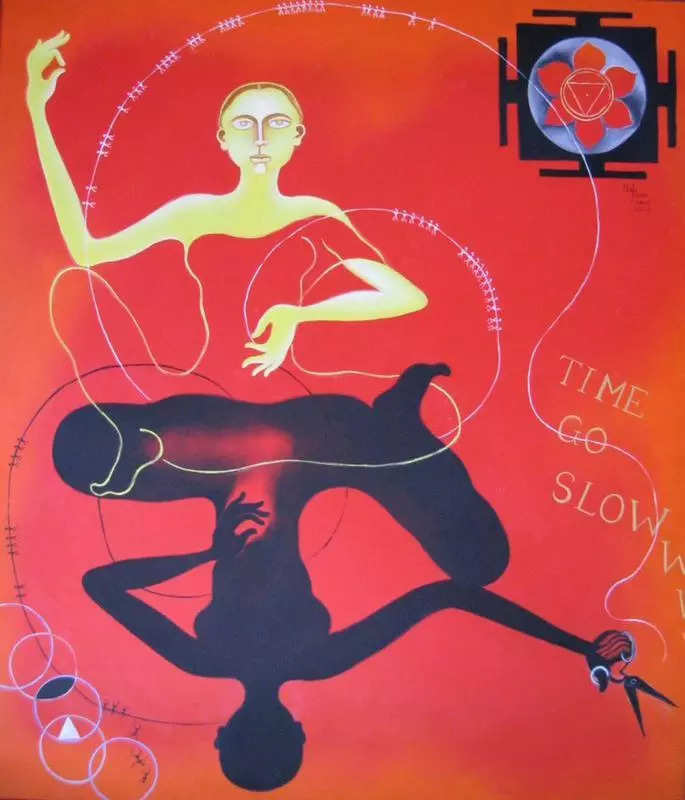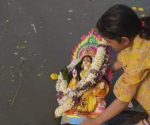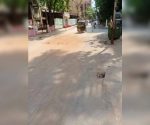How to align your wall art with Vastu | Mumbai News – The Times of India

Can a painting change your fate and fortunes for the better? It seems it can, but only if mounted at the right place. After two failed attempts to renew his H1-B visa, a 32-year-old man was betting on his last chance at the lottery system. His mother, a painter, turned to her Vastu consultant who told her to create a canvas featuring a full moon, with water in white and blue hues. She couriered the painting from Mumbai to her son, and it was placed at the northwest corner of his house. Soon enough, his visa got approved and he continued with his career in the US.
Mumbai-based Parag Awasthi has helped several such clients understand art placement using the principles of Vastu — an age-old Indian architectural and design system centred on balancing energy flow. Awasthi will be conducting a workshop on the intersection of Vastu and art on the sidelines of The Art of India (AOI) exhibition.
After a decade in the corporate world as an engineer and MBA, Awasthi found his calling in Vastu and has been helping clients across the globe ‘correct’ their Vastu misalignments for the last 13 years. “Vastu is about the five elements we studied in school: air, water, fire, earth, and sky. Each element corresponds to certain colours. Water is associated with blue shades, fire with red, earth with beige, sky with white or grey, and air with the greens and browns of trees. There are 16 directions in the house, and each is responsible for certain aspects of life. Wrong placement of art — like hanging a fire-themed painting in a water-dominated direction — can create energy clashes,” he says.
Several artworks that embody Vastu principles will be featured at the exhibition. ‘Krishna’s Raas Leela’, a Pichhwai with silver work on cloth, represents divine communion and its indigo palette makes it ideal for the Northwest direction. “A Rajeswara Rao’s ‘Hawa Ke Saath Saath’, an acrylic work showing a woman with binoculars, becomes particularly powerful in the west-southwest direction as it enables people to see what others miss,” explains Awasthi, adding, “Arpana Caur’s ‘Day and Night’ features the Swadisthan Chakra, associated with creative energy. Its placement in the south-southeast direction, combined with its red palette, promotes health, vitality, and creativity.”
When it comes to interior spaces, art is often chosen for its aesthetic appeal, sentimental value or investment potential. But for a growing number of homeowners and collectors, the placement and choice of artwork are being guided by Vastu Shastra. Namrataa Kripallani, a Pune-based Vastu consultant and artist, also helps align her clients’ existing art with the “right energy zones” or create customised pieces designed to activate specific elements. “Instagram has played a huge role in popularising Vastu. People are more open to the idea that their surroundings influence their lives, and art is an easy, accessible way to make adjustments,” she says.
Also, Vastu-compliant art isn’t about rigidly following traditional symbols like galloping horses or waterfalls — common recommendations in mainstream Vastu practice. “Most Vastu experts stick to a handful of standard placements — like running horses in the northwest or a waterfall in the north — but it’s actually much more nuanced,” says Kripallani, speaking of a business owner who had approached her saying his clients were happy with his work, but payments were constantly delayed. “After assessing his home, I found a blue wallpaper in the southeast zone which governs wealth generation. Blue represents water, which can suppress fire — the element needed for financial flow. We replaced it with a red-toned abstract painting, and he later told me that he started receiving long-overdue payments soon after,” she adds.
Many people naturally gravitate toward colours and compositions that subconsciously reflect what their home is missing, she says. “Some are instinctively aligned with nature’s balance. I’ve walked into homes where, without any knowledge of Vastu, everything is perfectly placed. But for those who feel stuck — whether financially, emotionally, or professionally — art can be a subtle yet powerful tool for change.”
Mumbai-based Parag Awasthi has helped several such clients understand art placement using the principles of Vastu — an age-old Indian architectural and design system centred on balancing energy flow. Awasthi will be conducting a workshop on the intersection of Vastu and art on the sidelines of The Art of India (AOI) exhibition.
After a decade in the corporate world as an engineer and MBA, Awasthi found his calling in Vastu and has been helping clients across the globe ‘correct’ their Vastu misalignments for the last 13 years. “Vastu is about the five elements we studied in school: air, water, fire, earth, and sky. Each element corresponds to certain colours. Water is associated with blue shades, fire with red, earth with beige, sky with white or grey, and air with the greens and browns of trees. There are 16 directions in the house, and each is responsible for certain aspects of life. Wrong placement of art — like hanging a fire-themed painting in a water-dominated direction — can create energy clashes,” he says.
Several artworks that embody Vastu principles will be featured at the exhibition. ‘Krishna’s Raas Leela’, a Pichhwai with silver work on cloth, represents divine communion and its indigo palette makes it ideal for the Northwest direction. “A Rajeswara Rao’s ‘Hawa Ke Saath Saath’, an acrylic work showing a woman with binoculars, becomes particularly powerful in the west-southwest direction as it enables people to see what others miss,” explains Awasthi, adding, “Arpana Caur’s ‘Day and Night’ features the Swadisthan Chakra, associated with creative energy. Its placement in the south-southeast direction, combined with its red palette, promotes health, vitality, and creativity.”
When it comes to interior spaces, art is often chosen for its aesthetic appeal, sentimental value or investment potential. But for a growing number of homeowners and collectors, the placement and choice of artwork are being guided by Vastu Shastra. Namrataa Kripallani, a Pune-based Vastu consultant and artist, also helps align her clients’ existing art with the “right energy zones” or create customised pieces designed to activate specific elements. “Instagram has played a huge role in popularising Vastu. People are more open to the idea that their surroundings influence their lives, and art is an easy, accessible way to make adjustments,” she says.
Also, Vastu-compliant art isn’t about rigidly following traditional symbols like galloping horses or waterfalls — common recommendations in mainstream Vastu practice. “Most Vastu experts stick to a handful of standard placements — like running horses in the northwest or a waterfall in the north — but it’s actually much more nuanced,” says Kripallani, speaking of a business owner who had approached her saying his clients were happy with his work, but payments were constantly delayed. “After assessing his home, I found a blue wallpaper in the southeast zone which governs wealth generation. Blue represents water, which can suppress fire — the element needed for financial flow. We replaced it with a red-toned abstract painting, and he later told me that he started receiving long-overdue payments soon after,” she adds.
Many people naturally gravitate toward colours and compositions that subconsciously reflect what their home is missing, she says. “Some are instinctively aligned with nature’s balance. I’ve walked into homes where, without any knowledge of Vastu, everything is perfectly placed. But for those who feel stuck — whether financially, emotionally, or professionally — art can be a subtle yet powerful tool for change.”
















